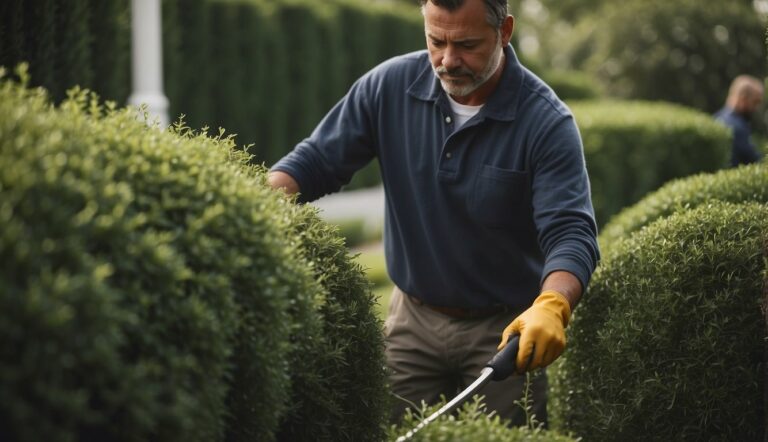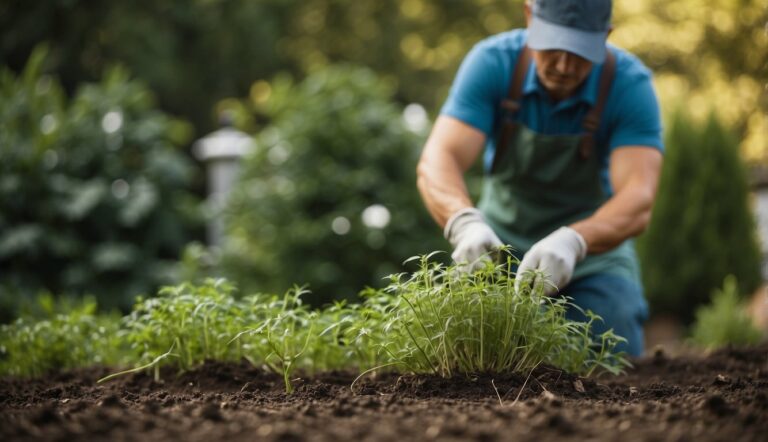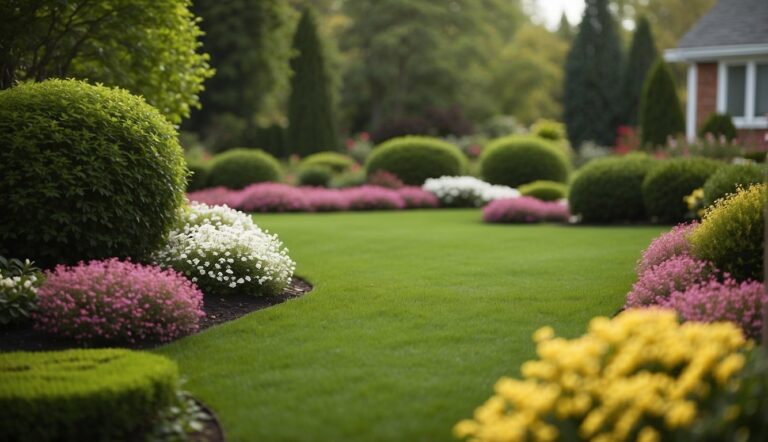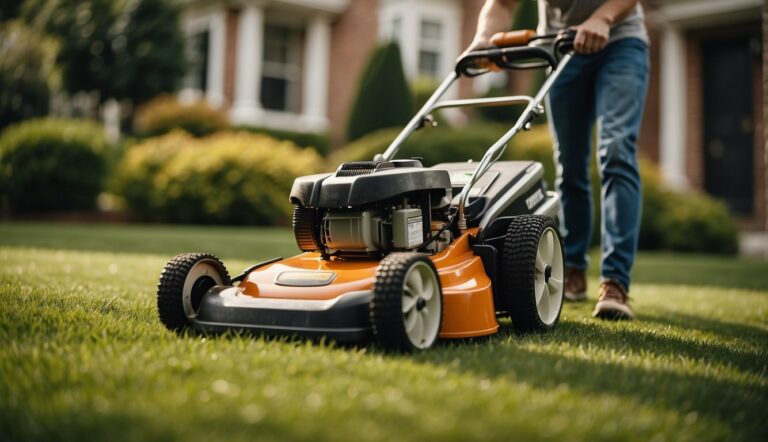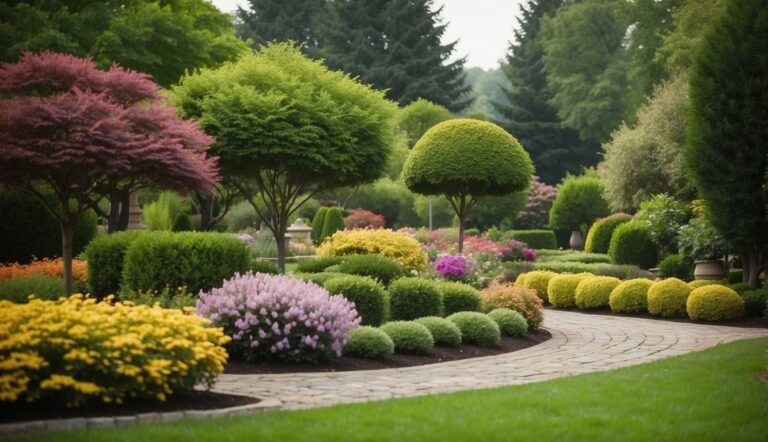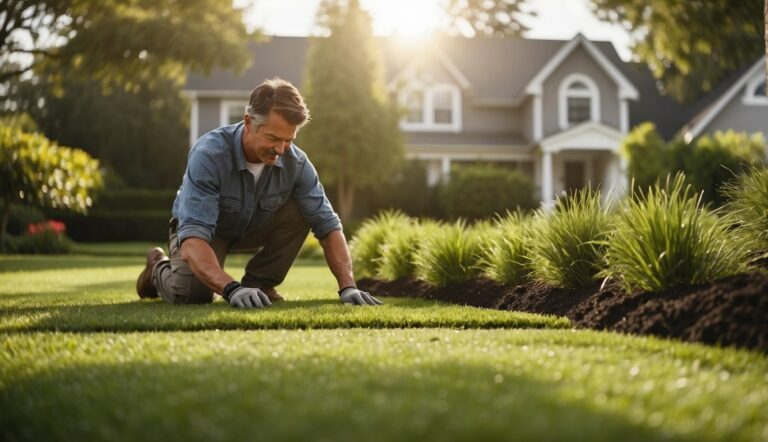Maintaining a lush, vibrant lawn is a point of pride for many homeowners, and we understand the critical role that dethatching plays in keeping grass healthy. As the owner of a locally-operated landscaping company with extensive experience in lawn care, we’ve seen firsthand the difference a dethatched lawn can make. Thatch is a layer of organic material, composed of dead grass, roots, and debris that accumulates between the grass and the soil. Over time, it can form a barrier that prevents essential nutrients, water, and air from reaching the soil, stifling your lawn’s growth and vigor.
Our approach to dethatching involves removing this barrier to promote better water absorption, nutrient penetration, and airflow to the roots of your grass. This process not only revitalizes your lawn but also enhances its ability to fight off diseases and pests. By incorporating dethatching into your lawn care routine, you ensure that your grass has every advantage to thrive throughout the season. We’re here to provide the expertise and services necessary to help you achieve the healthiest lawn possible.
Why Is Dethatching Important?
As experts in landscaping, we know that a well-maintained lawn is not just about regular mowing and watering. A crucial but often overlooked aspect is dethatching to ensure your grass remains healthy and vibrant.
What Is Thatch?
Thatch is a layer of organic matter composed of dead grass, roots, and leaves that accumulates between the soil surface and the base of the grass blades. A small amount of thatch can be beneficial, as it protects the roots and regulates soil temperature. However, an excessive buildup—typically more than half an inch—can impede the essential flow of air, water, and nutrients to the grass roots, undermining lawn health.
Benefits of Dethatching
Dethatching your lawn offers a myriad of benefits:
- Improves Air Circulation: It allows your lawn to breathe by opening up the soil and grass roots to the air.
- Enhances Water and Nutrient Uptake: Reduces water runoff and enhances soil absorption, ensuring nutrients reach the roots.
- Promotes Stronger Grass Growth: By removing the barrier of thatch, grass roots can grow deeper, creating a healthier, more resilient lawn.
- Disease Prevention: A thick thatch layer can harbor pests and diseases. Dethatching helps minimize this risk.
When to Dethatch
The timing of dethatching is crucial for the health of your lawn:
- Spring: An ideal time to dethatch cool-season grasses, as they peak in growth and can recover quickly from any stress caused by dethatching.
- Fall: Best for warm-season grasses, which are typically growing vigorously during this time, allowing them to heal and fill in any spaces created by the removal of thatch.
The need for dethatching can vary depending on the grass type, climate, and soil conditions of your locale. Our team at our local landscaping service company provides professional dethatching tailored to your lawn’s specific needs, ensuring it receives the right care at the right time.
The Dethatching Process

As experts in the field, we’ve seen how a healthy lawn can be compromised by thatch buildup. Our dethatching service is tailored to remove this layer, enhancing your lawn’s ability to absorb water and nutrients effectively.
How Dethatching Works
Dethatching is the method of removing the layer of decomposing plant material—namely thatch—from the lawn. Thatch is an intermingled mat of dead and living stems, roots, and leaves situated between the soil surface and the green vegetation. When this layer becomes too dense, usually more than half an inch thick, it can prevent sunlight, oxygen, and water from reaching the grass’s roots. Our service uses specialized equipment to systematically remove thatch, ensuring your lawn can breathe and absorb essential nutrients.
Dethatching Techniques
Several techniques are employed to dethatch a lawn, each suited to different thatch conditions and lawn types. Here are two common methods:
- Power Raking: This is best for lawns with light to moderate thatch accumulations. We use a machine with rotating tines to slice through and lift up thatch.
- Vertical Mowing: This method is more aggressive and suitable for lawns with severe thatch problems. Machines with vertical blades cut through the thatch and bring it to the surface. Both techniques might be followed by collection and removal of the loosened thatch debris.
It’s crucial to select the right technique for your lawn to prevent damage to the grass.
Dethatching vs. Aeration
Dethatching and aeration are different but complementary services we provide to maintain lawn health.
- Dethatching: Targets the thatch layer exclusively, aiming to remove it from the lawn.
- Aeration: Involves the removal of small cores or “plugs” of soil to improve air, water, and nutrient penetration (commonly used in conjunction with dethatching to aid recovery).
While both processes promote a healthier lawn, choosing one over the other depends on the specific issues your lawn is facing. If the thatch is the main issue, dethatching is appropriate. However, if there’s also soil compaction, then aeration might be necessary.
Choosing a Professional Dethatching Service
When selecting a professional dethatching service, it’s essential to choose experts who not only enhance the health of your lawn but also provide trust and value. We’ll guide you through the process based on our professional landscaping expertise.
Why Hire Professionals?
Dethatching, when done correctly, removes the layer of dead grass and organic matter that can choke your lawn. We, as lawn care experts, have the necessary experience and specialized equipment to perform this task efficiently, ensuring your lawn can breathe and absorb nutrients properly. By hiring professional services, you benefit from:
- Expertise in identifying when your lawn truly needs dethatching
- Use of professional-grade equipment that won’t damage your grass
- Proper disposal of the extracted thatch
What to Look for in a Service Provider
When you’re ready to hire a local professional for lawn dethatching services, here’s what to consider for the best results:
- Reputation: Ensure they have positive reviews or testimonials from satisfied customers.
- Experience: Verify the number of years they’ve been providing lawn dethatching.
- Pricing: It should be transparent and affordable, reflecting the quality of service provided.
- Licensing and Insurance: Confirm they are fully licensed and insured to protect your property.
- Customer Service: They should be communicative and responsive to your lawn care needs.
At our company, we tick all these boxes, offering professional dethatching services that prioritize your lawn’s health while maintaining the trust and satisfaction of our clients.
Lawn Care Tips After Dethatching

After dethatching your lawn, it’s crucial to follow proper lawn care practices to ensure a quick recovery and promote healthy grass growth. We’ll guide you through essential post-dethatching maintenance, seeding and fertilizing strategies, and an effective watering regimen.
Post-Dethatching Lawn Maintenance
When we dethatch, we’re removing the dense layer of dead material that can suffocate your grass. The immediate step after dethatching should be clearing the debris. This can be achieved with a garden rake or, for larger areas, a lawn sweeper. Removing the thatch allows for better water penetration and air flow to the soil, which is vital for root development and overall lawn health.
- Clear the Thatch: Use a garden rake for small lawns or a lawn sweeper for larger areas.
- Inspect the Lawn: Look for bare spots that may benefit from seeding.
Seeding and Fertilizing
After your lawn has been cleared of thatch, overseeding can help fill in bare patches and thicken the lawn. Select a high-quality seed that matches your current grass type for best results. Approximately 2-3 weeks after overseeding, consider applying a balanced fertilizer to provide essential nutrients and promote vigorous growth.
- Overseeding: Apply grass seed evenly across bare patches.
- Fertilizing: Use a fertilizer with a balanced NPK ratio suitable for your grass type.
Note: Always follow the manufacturer’s instructions when applying seed and fertilizer.
Watering Regimen
Post-dethatching, your lawn requires a consistent watering schedule to aid in recovery and establishment of new seedlings. Initially, water the lawn deeply to encourage deep root growth. Following this, adjust your watering frequency to keep the soil moist but not waterlogged, which is essential for seed germination and to avoid root rot.
- Initial Watering: Provide a deep soak immediately after dethatching.
- Regular Watering: Maintain soil moisture with an inch of water per week, split into two applications.
| Week | Watering Frequency | Watering Depth |
|---|---|---|
| 1 | Daily (for seedlings) | Light soak |
| 2+ | 2-3 times per week | 1 inch total |
By adhering to these tips, our comprehensive approach helps you nurture your lawn back to full health. With our expertise in landscaping, we ensure that the service we provide leaves your lawn in stellar condition.
Common Concerns and Solutions
In our years of experience in landscaping, we’ve identified that thatch and related issues are common among homeowners’ lawns. We’ll guide you through identifying excessive thatch and addressing common problems.
Identifying Excessive Thatch
Excessive thatch is a dense layer of organic material—such as roots, leaves, and stems—sitting between the green vegetation and the soil surface. Key indicators of excessive thatch include:
- Color: A lawn with a spongy feel and dull color may suggest thatch buildup.
- Patches: Irregular patches that resist growth and indicate poor nutrient flow.
Conduct a Simple Test: Insert a garden trowel into your lawn and lift a section to inspect the thatch layer—it should ideally be less than half an inch thick.
Addressing Common Issues
Once thatch build-up is confirmed, various issues can arise, such as debris accumulation, disease vulnerability, pest infestations, and weed competition. Here’s how we address them:
- Clear Debris: Regularly remove leaves and twigs to prevent debris from contributing to thatch.
- Dethatching: Remove thatch to curb diseases and pests that find shelter in thick thatch layers.
- Aeration: This can improve nutrient flow and combat compacted soil conditions that favor weeds over healthy grass.
- Lawn Care Regimen: Customize fertilizing, watering, and mowing practices to keep thatch under control and maintain the beauty of your lawn.
